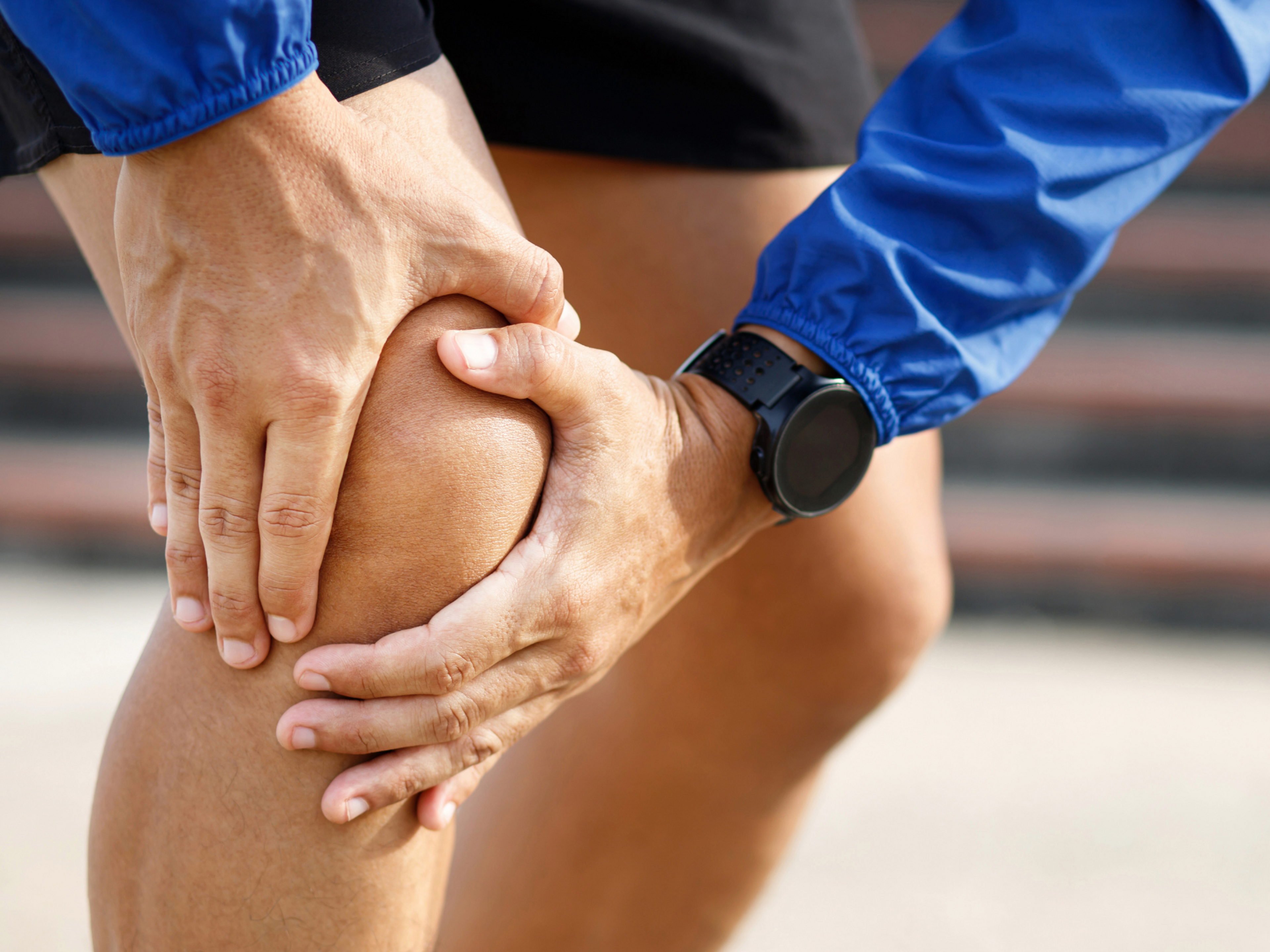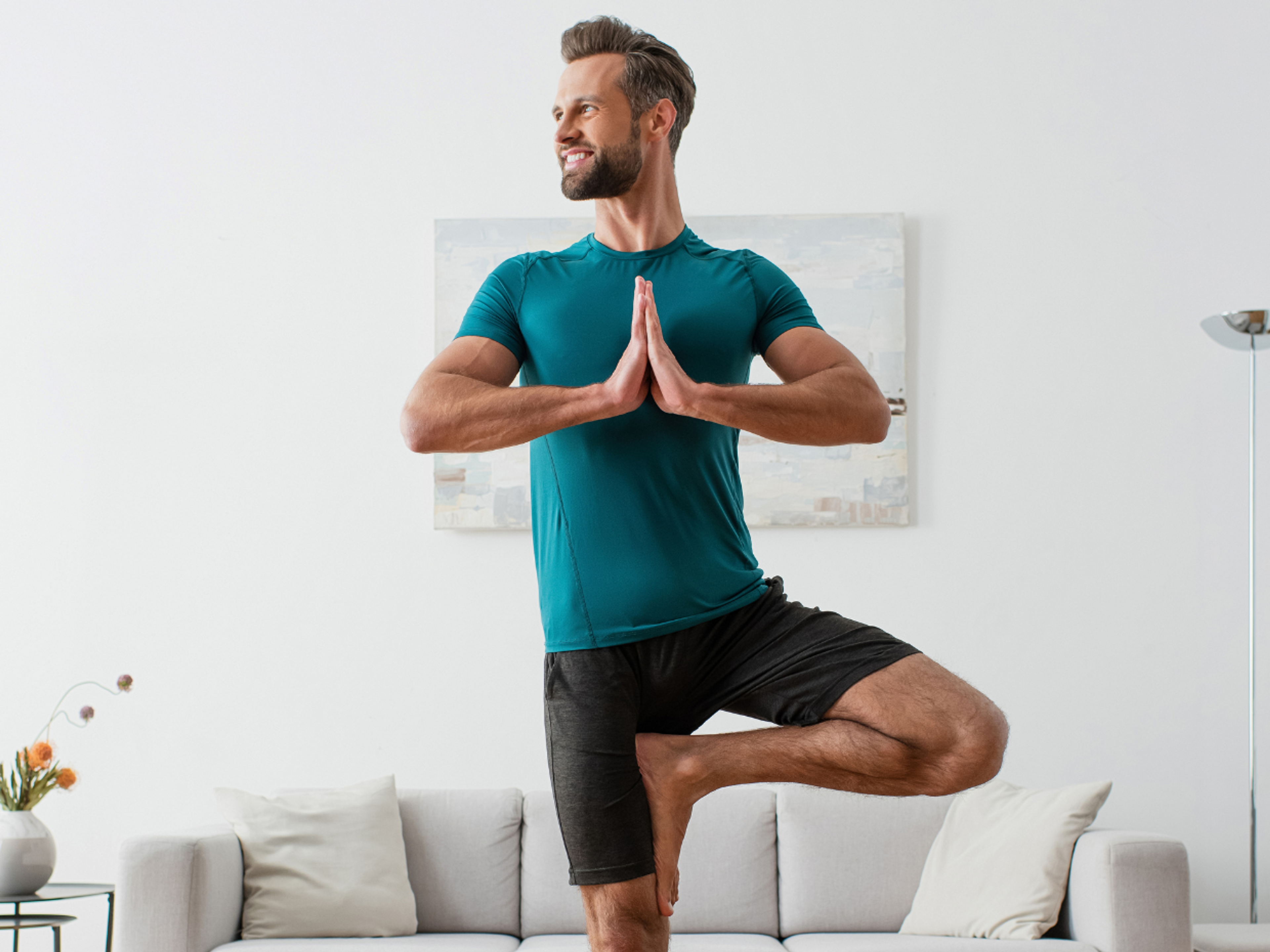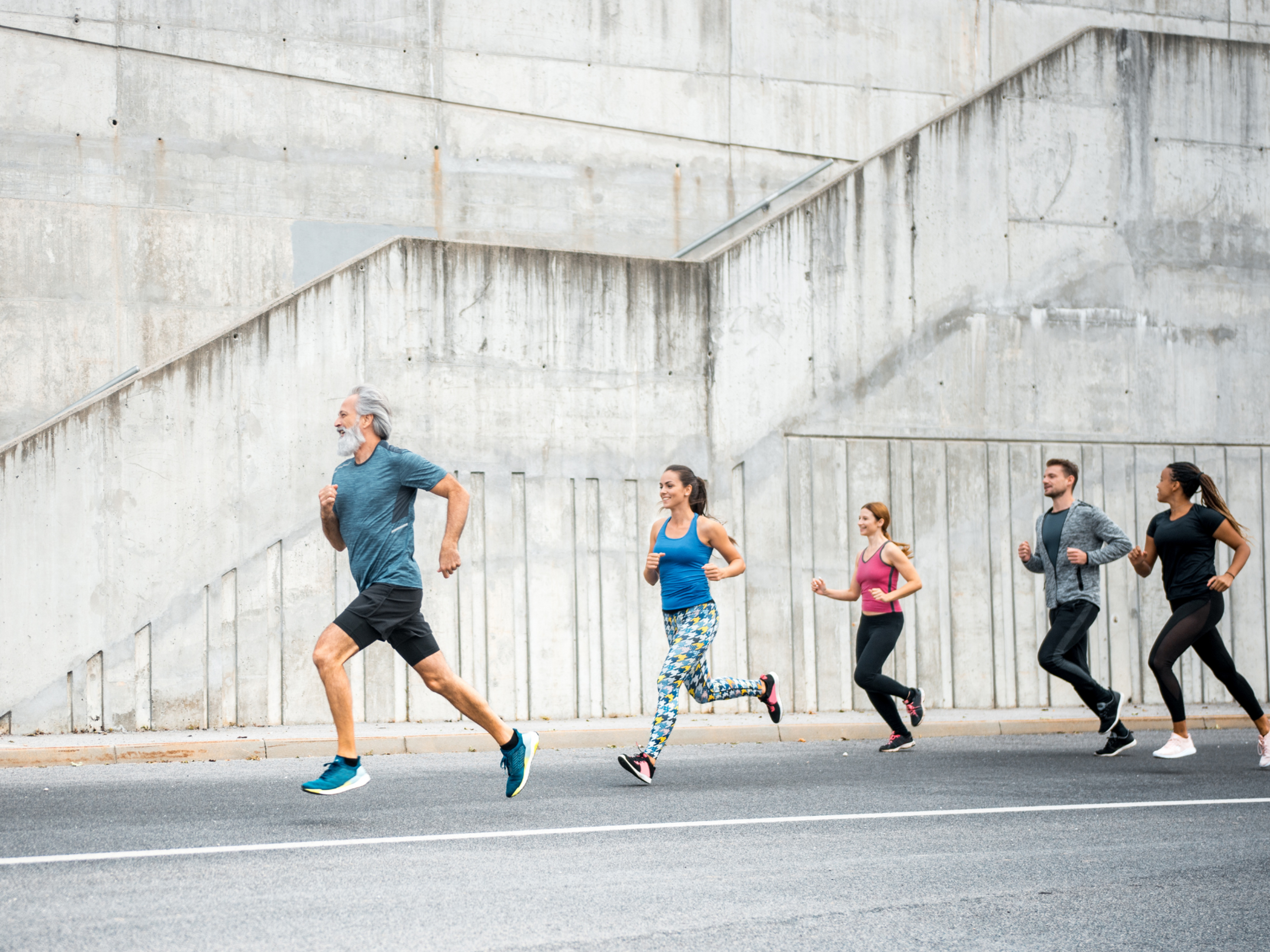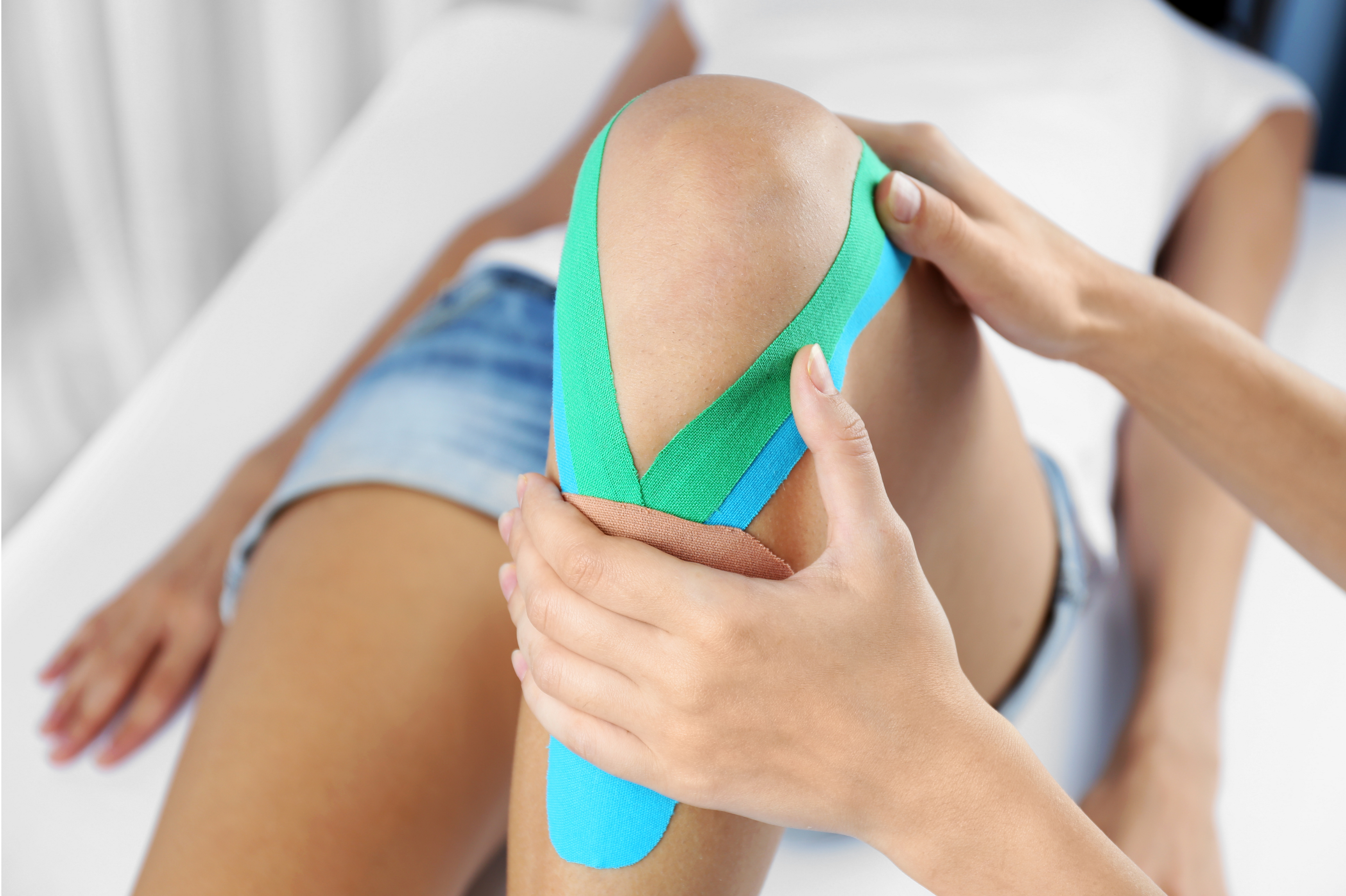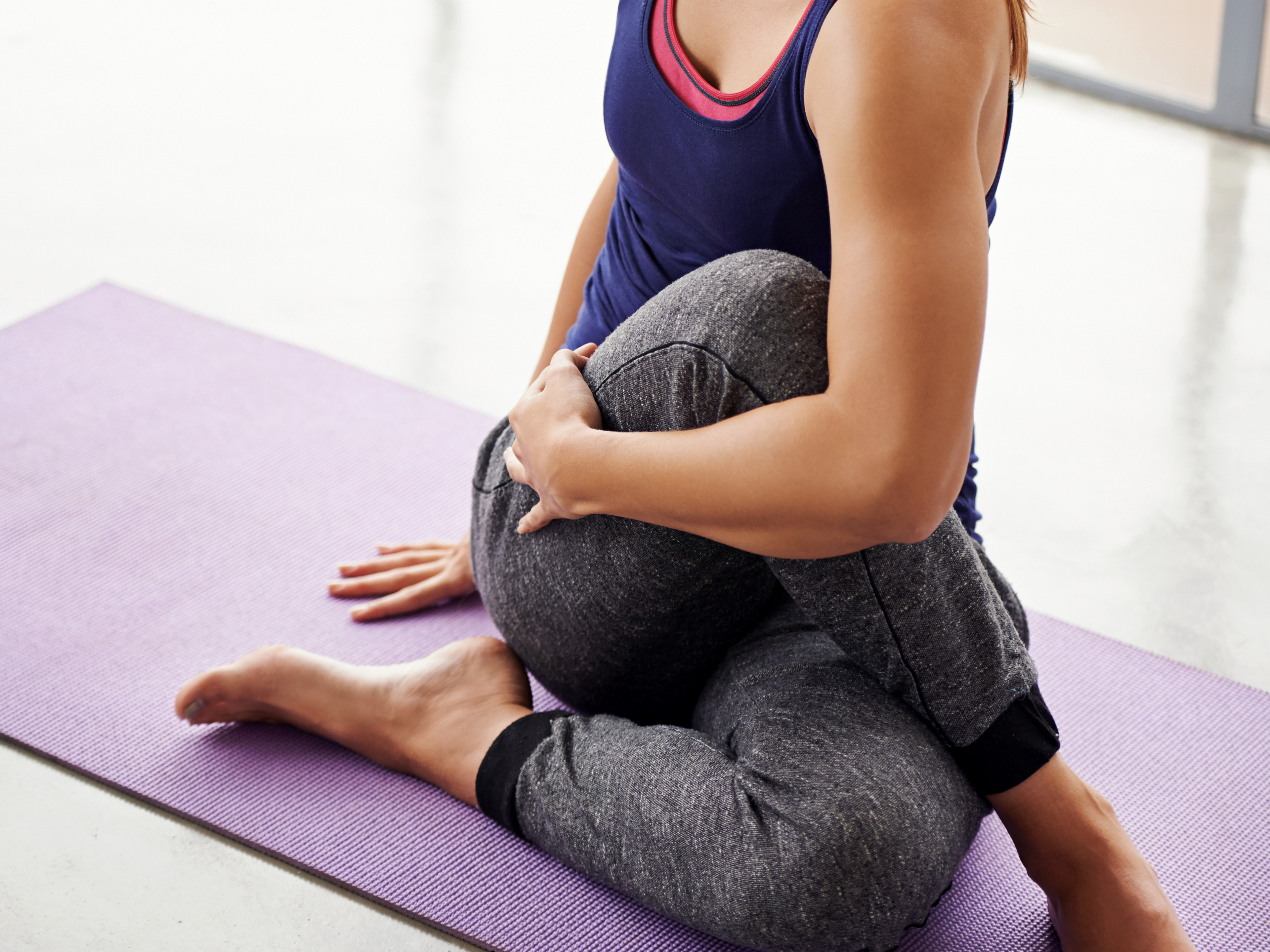Patellofemoral pain syndrome - Treat the cause, not the symptoms
What is patellofemoral pain syndrome?
Patellofemoral pain syndrome refers to pain felt in and around the kneecap. It's usually caused by one or more of the structures in the patellofemoral joint becoming inflamed or irritated.
What's the patellofemoral joint?
Your knee actually consists of 2 joints. The main knee joint is formed between the bottom of your thigh bone (femur) and the top of your shin bone (tibia).
Then there's the smaller joint (patellofemoral joint) over the front of your knee, where the underside (back) of your kneecap lies over the front of your shin and thigh bones.
The kneecap sits inside the tendon that attaches your front thigh muscles (quads or quadriceps) to your shin bone. It moves in a shallow groove that runs across the front of your main knee joint.
As you bend your knee, the compression between the back of the kneecap and the bones increases. This is why having your knee straight (low compression in the joint) is often more comfortable when you have patellofemoral pain syndrome.
The underside of the kneecap and the groove are both lined with slippery cartilage. This cartilage protects the bones.
The patellofemoral joint is held together by a thick capsule with a synovial lining of cells that "look after the joint." These cells produce and transport nutrients for the joint.
When you have patellofemoral pain syndrome, any or all of these components that make up the patellofemoral joint can be injured.
Patellofemoral pain syndrome symptoms - What it feels like
We've listed the most common symptoms below. But, of course, every person's injury is slightly different, and you will likely not experience all of these symptoms.
The most common symptoms of patellofemoral pain syndrome include:
- Feeling pain in or around the kneecap
- The pain is diffuse - you can't really find the painful bit when you press around your knee
- Activities that load the patellofemoral joint (like walking up or down stairs or hills, squatting, running, or jumping) cause pain
- Sitting still for long periods with your knee flexed to 90 degrees or more may hurt
- Sleeping with your knees bent up past 90 degrees may also increase your pain
- You may notice a little swelling or puffiness above or below the kneecap
- The kneecap may clunk, click, or crackle when it moves, but this can also happen in uninjured knees
- The pain usually starts gradually or without any traumatic event
Movie-goers knee
Does patellofemoral pain syndrome show up on MRI or X-ray?
No, it doesn't show up on scans. If you have pain over the front of your knee and your MRI scan or x-ray didn't show any injuries or arthritis, you likely have patellofemoral pain syndrome.
Patellofemoral pain syndrome is not arthritis
What causes patellofemoral pain syndrome?
Patellofemoral pain syndrome is an overuse injury that develops when the forces you place on your patellofemoral joint are higher than it can cope with.
This overuse or overload can happen suddenly, during one training session or activity, or gradually accumulate over several sessions.
Different ways in which you can overload your patellofemoral joint
1. Poor movement patterns
Movement patterns (or biomechanics) refer to how your leg moves when you walk, run, or jump. Nobody's legs move in an absolutely straight line. Instead, a vast range of movement patterns are seen as typical.
Researchers have identified 2 movement patterns that may predispose you to develop patellofemoral pain syndrome:
- If your leg turns in excessively and/or
- If your leg crosses over too far towards the mid-line.
Why is this a problem? As mentioned earlier, the kneecap moves in a shallow groove over the front of the knee.
If your knee turns in excessively or your leg moves too far over to the midline, it can cause the kneecap to be pulled slightly out of alignment. This can put more force on specific parts of your patellofemoral joint than it should, causing it to strain.
The main causes for poor movement patterns when you walk or run include:
- Weak muscles – especially the core, gluteal, and ankle stabilizing muscles
- Reduced ankle dorsiflexion due to a stiff ankle joint or tight calf muscles
- Tight thigh muscles (especially outside thigh muscles) are thought to pull the kneecap out of alignment
- Sometimes, running with poor form or biomechanics can simply be a bad habit
The Exakt Health app includes a rehab plan for patellofemoral pain syndrome designed to address all of these elements.
2. Weak quadriceps (thigh muscles)
Your front thigh muscles are meant to absorb most of the force created when you walk, run, and jump. If they are weak, more of this force is transferred to your knee joints.
3. Training errors
The two most common training errors that can lead to developing patellofemoral pain through sports like running are:
If a training session is too hard
At any given time, your body (and your knee) will have a specific strength or capacity for how much load or force it can handle.
This strength can increase when you train or decrease when you stop being active or don't exercise for a while.
If you do a training session that is much harder (faster, further, more hilly, etc.) than what you're used to, your knee may not be strong enough to cope with those high loads.
If you don't allow enough recovery time between sessions
Whenever we exercise, our bodies sustain micro-injuries or damage. This is normal and also why you must allow enough recovery time after training sessions. Your body uses this recovery time to repair the micro-damage and grow stronger.
On the other hand, if you don't allow enough recovery time, the micro-damage accumulates and causes overuse injuries like patellofemoral pain syndrome.
4. Daily activities
Running or sports isn't always the main reason people develop patellofemoral pain syndrome. Sometimes, they overload and irritate the kneecap through other activities they do during the day. Examples include:
- Activities that involve a lot of repetitive deep squatting - bending to pick things up
- Kneeling for long periods - cleaning low cupboards or washing floors
- Going up and down stairs several times while carrying extra weight, like boxes
Typical recovery times for patellofemoral pain syndrome
How long it takes to recover from patellofemoral pain syndrome depends on how severe your specific case is and how quickly and effectively you treat it.
- Symptoms usually start to improve within 4 weeks of starting the right treatment plan.
- Mild cases can fully resolve within 6 to 8 weeks.
- More severe cases may take several months to recover, especially if you've ignored it for some time and continued to train through pain.
Can patellofemoral pain syndrome (runner's knee) cause permanent damage?
Yes, but not very often. Some evidence suggests that neglecting patellofemoral pain syndrome may predispose you to develop osteoarthritis in your patellofemoral joints.
But this is not true for everyone, so please don't worry about this too much!
Think of it as a good reason not to ignore your knee pain and seek treatment advice early.
Treatment for patellofemoral pain syndrome - An individualized approach
Treatment for patellofemoral pain syndrome can be divided into:
- Treatments that help settle your injury and pain so healing can start (short-term recovery)
- Treatments that address the cause of the injury - helping your long-term recovery
Treatments that help with short-term recovery and pain relief include:
- Relative rest is the most essential aspect to get right, and we discuss it in more detail below.
- Kinesiology taping can reduce your pain and improve your position sense.
- Ice can provide pain relief, but be careful not to overuse it. Only apply ice for 10 minutes at a time.
- Acupuncture or dry needling can relieve pain and is a better option than medication.
- Massage may also reduce your pain.
- Anti-inflammatory medication (like ibuprofen) can help reduce pain but may interfere with your healing process. It's best only to use it if really needed and under a doctor's guidance.
- According to the research, electrotherapy modalities like ultrasound and laser are a waste of time and not worth using for patellofemoral pain syndrome.
Of all of these treatments, only relative rest truly impacts healing. The others only provide temporary pain relief - use them only if needed.
How to apply relative rest
To allow your injured knee to settle down and recover, you must temporarily reduce the force and load you place through it.
Relative rest is different from complete rest. You don't have to stop all your activities. You only need to modify their volume, intensity, or the type of activity you do so it no longer causes you pain.
This applies to your normal daily activities as well as your sport. Some adjustments that may help include:
- Reducing the number of stairs you climb in a day
- Sitting with your leg straight rather than bent
- Sitting on a low chair instead of kneeling when working in the garden or low cupboards
- Avoiding hilly or uneven walks or runs
- Reducing your number of weekly running sessions
- Sticking to low-intensity training (only easy runs)
- Reducing your walking or running distance
Suppose you've made these adjustments, and your knee still feels sorer after a run. In that case, you may have to switch out running for other activities (like walking) that don't irritate it.
Essential treatments for long-term recovery
To fix patellofemoral pain syndrome for good and stop it from returning, you must address your injury's root cause. Or, in other words, what caused your knee to overload and become painful?
If it was simply a case of ramping up your training or activity too quickly, then relative rest and carefully increasing your activities may be all the treatment it needs.
However, if muscle weaknesses or poor movement patterns caused your case, you will have to take measures to correct those.
Treatments that help long-term recovery include...
In our other articles, you can find a detailed discussion with examples of strengthening exercises for patellofemoral pain syndrome and what stretches may help, including when to start them and common pitfalls. We've also previously written about balancing exercises and how to correct common running form mistakes.
Doing the correct exercises at the correct stage of recovery is essential.
The Exakt Health app guides you through this process step by step. It provides straightforward advice on when to start, progress, maintain, or take your exercises back a level, helping minimize flare-ups and keeping you on track with your recovery.
Conclusion
Patellofemoral pain syndrome is a common condition that can get in the way of your sport and daily life, but there are many things you can do to help it.
Always start by giving your knee the rest it needs, then build up the appropriate exercises and work on improving your movement patterns and running style.
Need help going through the stages of patellofemoral pain syndrome rehab? We have it all laid out for you. Download the Exakt app to get started!
